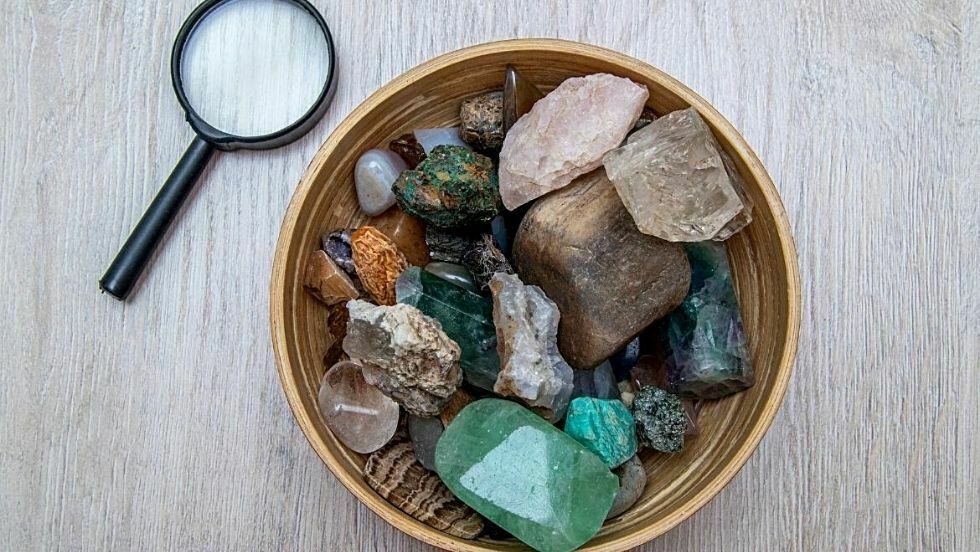Clay minerals are minerals extracted from the earth. Among the most well-known kinds are kaolin clay and bentonite clay. But aside from the two, there are many other types of mineral clay, such as chlorite, smectite, illite, and so on. Clay minerals are useful as clarifiers, absorbents, and adsorbents. Because of their versatility, availability, and low cost, they are utilized in a variety of industrial applications, including paper, paint, petroleum, ceramics, cement, glue, asphalt, and the food and healthcare industries. Each industry needs different type of clay minerals. This article will explain about six different types of mineral clays and their characteristics.
1. Kaolinite

Kaolinite is the most common type of clay. It can be easily found worldwide, extracted from rocks that are rich in kaolinite, later identified as kaolin clay. It mostly comes in white color as a result of the chemical weathering to the aluminum silicate (such as feldspar), creating a soft earthy mineral.
Kaolinite has triclinic symmetry and is electrostatically neutral. The hydrogen bonding occurs between the paired layers of the hydroxyl ions and oxygen atoms. Because hydrogen bonds are weak, random movement between layers is widespread, resulting in lesser crystallinity in kaolinite minerals than in triclinic kaolinite. Kaolinite has no charge in its ideal structure.
2. Illite Group
A phyllosilicate, or layered alumino-silicate, is an example of this type of clay minerals. The clay fractions, often known as fine-grained Mica, also contain muscovite and biotite. Illite is a modified form of muscovite and feldspar that forms as a result of weathering and hydrothermal settings, and it is a sericite component.
It can be found in soil, clayey sedimentary rocks, and low-quality metamorphic rocks. The tetrahedral sheet in illite has a larger negative charge than Vermiculite due to the 20% aluminum atoms present in the tetrahedral sheet in place of silicon atoms sites with significant ion substitution.
Illite group has a weaker capability in shrinking and swelling than Vermiculite, but is better than Kaolinite.
3. Smectite Group
Smectites are primarily composed of either a dioctahedral 2:1 (Pyrophyllite) or a trioctahedral 2:1 (talc) structure, with isomorphous substitution in the octahedral or tetrahedral layer distinguishing them from neutral structures.
Saponites (trioctahedral) and Montmorillonite are two type of clay minerals found in the Smectite group (dioctahedral). Bentonite is another key member of the Smectite family. Bentonite clay, commonly known as sedimentary clay, has a peculiar water-retaining property. Furthermore, bentonite is also divided into several other types, including sodium bentonite, calcium bentonite, and potassium bentonite.
4. Chlorite

Chlorite is primarily a member of the 2:1:1 silicate group, which consists primarily of iron magnesium silicates with a little amount of aluminum atoms. In the brucite layer, magnesium ions occupy all octahedral sites in chlorite. Chlorites have a lower negative charge than smectite or vermiculites, but in the same level as fine-grained mica. The non-expandable nature of the crystal is due to the lack of water adsorption between the layers.
5. Vermiculite
Vermiculite was initially discovered in Millbury, Massachusetts, in 1824. Its name comes from the Latin word vermiculare, which means “to generate worms,” referring to the way it exfoliates when heated (Vermiculite). Vermiculite chemical formula is (Mg,Fe2+,Fe3+)3(SiAl)4O10(OH)24H2O.
Vermiculite is also a 2:1 type of clay minerals, meaning it has one octahedral sheet sandwiched between two tetrahedral sheets. The majority of Vermiculites have a dioctahedral structure and are Al dominated. Vermiculite is a hydrous phyllosilicate mineral that expands significantly when heated, resulting in exfoliation, which can be achieved using commercial furnaces.
6. Allophane
Allophane is a category of hydrous aluminosilicate minerals that are found in nature. They are not completely amorphous, but they are (partially) organized over a short distance.
Allophane is characterized by the Si-O-Al bonds domination, with most tetrahedrally coordinated aluminum atoms. Allophane’s morphology varies from tiny, circle ring-shaped particles to scattered aggregates, indicating that the round-shaped particles could be hollow spherules or polyhedrons. Their chemical compositions, despite their indefinable structure, fit within a relatively small range.
Those are several type of clay minerals. As for the purpose, clay minerals are used in various industries, from beauty, manufacturing, to medicine. After the extraction from the earth, mineral clay must be purified first before being incorporated for different uses.


Recent Comments